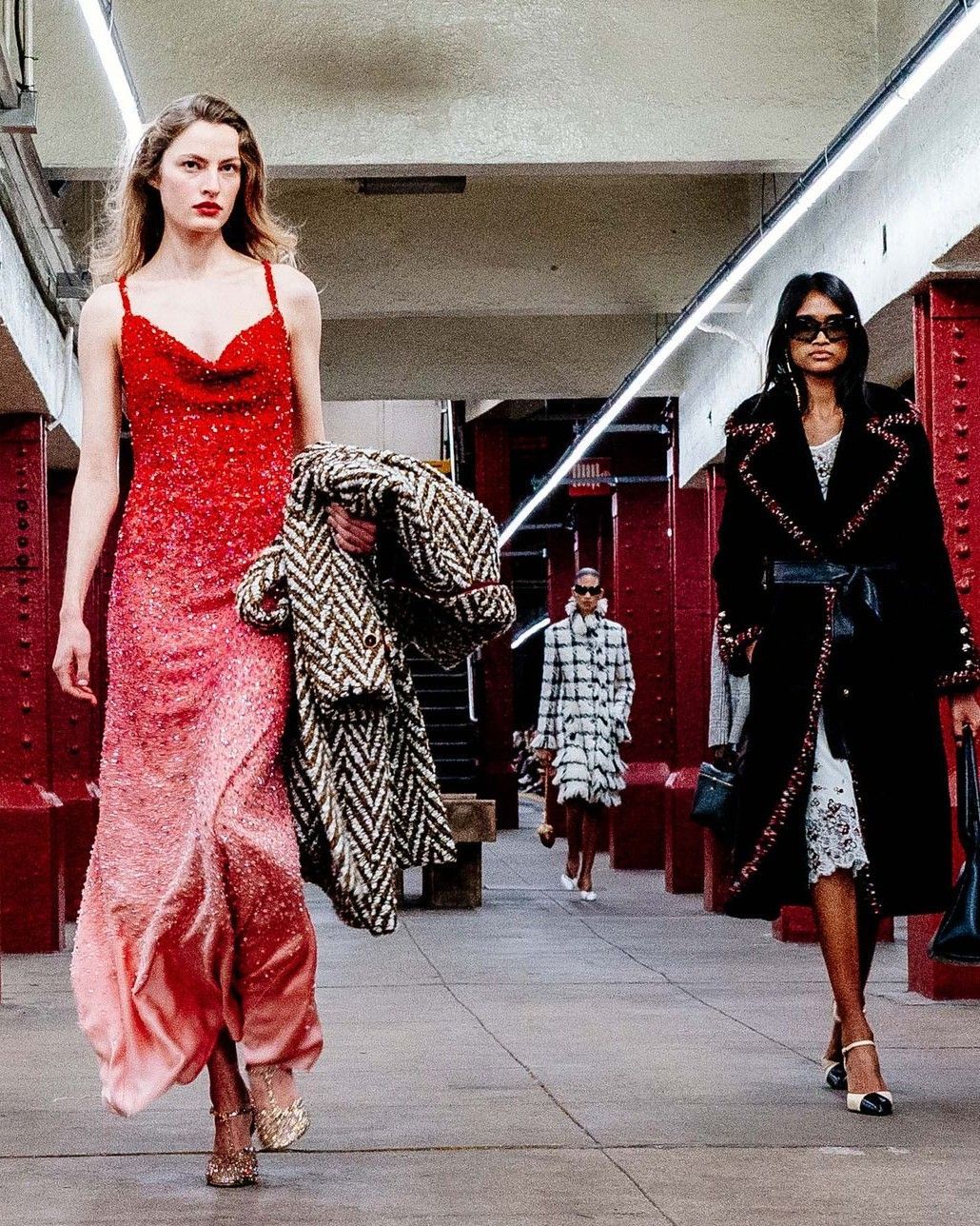
At Milan Fashion Week SS25, a clash between sincerity and strategy What distinguishes a fashion brand from a luxury clothing manufacturer?
«It is the power of sincerity over that of strategy», wrote Mathieu Blazy in the notes of his latest SS25 collection for Bottega Veneta – one of the highlights of the recently concluded Milan Fashion Week. A phrase that, despite its balanced neutrality, highlights without ceremony what is at the core of fashion's problem today: the lack of “sincerity” among designers, whose creativity often seems too filtered and distilled by administrative, marketing, and merchandising teams. Perhaps in more prosaic terms, from a businessman's perspective, Marco Bizzarri shared his view during a luxury conference at Mediobanca: «One of the reasons the industry is suffering today is that there is no novelty in the market. No one creates or dares anymore, creative directors are somewhat bridled by constraints, while they need more autonomy in their relationship with CEOs». These words recall the first episode of In Vogue that tells how, during Dior's revival in the 1990s, Arnault gave John Galliano a blank check, instructing him to bring the brand back into the spotlight at any cost. Fashion history indeed shows that often when a creative director is given free rein, they achieve that infamous “wow effect” that today is thought to be attainable by disciplining, controlling, and confining creativity within budget forecasts. In fact, the best shows of the Milan season were those where sincerity, joy, and ease of the designers were palpable: Francesco Risso at Marni, Simone Bellotti at Bally, Sabato de Sarno at Gucci, the aforementioned Blazy at Bottega Veneta, and Glenn Martens at Diesel.
But inventiveness was not lacking this season from an entire array of other designers: oone thinks of Sabato de Sarno, who at Gucci began to give accomplished form to his design language; of Filippo Grazioli’s reinterpretation of joie de vivre at Missoni, finally freed from the tyranny of sweaters; of the atmosphere of The Attico show, a brand that, according to our predictions, is increasingly draped in that quintessential "Milanese" quality that so many aspire to but in a youthful version that escapes the tired trope of the signora; and of Sunnei, whose creators, Loris Messina and Simone Rizzo, understood over a decade ago that you don’t need a big idea but simply a fresh idea to make a collection stand out. Elsewhere, the creativity of many designers seemed too regulated by an external committee, too fenced in by guidelines and quarterly growth targets to have the ease required for a show to truly break through. A kind of creative dullness (in our view, not due to the designers but to their CEO-babysitters) that manifested itself in a constant recourse to nostalgia and self-referencing – the surest sign of creative directors who have more faith in the past than in the future, or who, simply, don’t care anymore. It’s no secret to anyone that there are brands in Milan that could quietly disappear tomorrow without a tear being shed: old bastions of luxury that it’s neither convenient to demolish nor renovate and that, therefore, exist because they must, amid a general disinterest that, strangely enough, isn’t immediately noticeable given the extreme flattery that has always plagued the fashion system.
The solution to this phase of stagnation is different for each brand. If in past years the problem was that a bombastic narrative was applied to clothes that, in-store, were nothing more than branded merch; today, everything seems to have flattened to the product, giving us an endless series of jackets-shirts and workwear lines. What’s missing is the feeling of approaching a collection as the testimony and result of a precise taste, the concretization of a defined personality: the public wants to get drunk on authorship as one would on wine – that’s why the media world still obsessively returns to the shows of Galliano, Ford, and McQueen, a trio of creatives who emerged when post-80s fashion was becoming increasingly "old" and embalmed, proposing viscerally intense aesthetics. In truth, just as happened then, the feeling is that fashion is in a self-referential bubble from which inspirations derived from modernity are no longer visible. In London, although lacking the big names that Italy has, the barrier between street and runway is far more permeable, and designers create with young people in mind – the average target age of Milanese designers is certainly more mature. The thrills of youthfulness are offered by more underground projects like the well-known AVAVAV and that of HG/LF, which on the last day of fashion week organized not a show but a theatrical performance entitled A Call to Dreamers of Fallen Systems, gathering an audience of young enthusiasts who found themselves in the angry, dissident romanticism that oozed from the clothes: in the rawness of the presentation, a life pulse was felt.
The Colombian writer and philosopher Nicolás Gómez Dávila wrote in the 1970s that «vulgarity is pretending to be what we are not». In this sense, many brands here in Milan have not yet figured out who they should or want to be, and yet still pretend to be something. The results are formally good but ultimately frustrating: if the point of fashion were beautiful clothes, fashion weeks would take place in shopping malls. A brand’s identity is not a destination but the line on which the designer’s vision, the CEO's desiderata, and the public's expectations align. A difficult alignment to find but one that establishes the demarcation between brands that build a coherent and three-dimensional identity and brands that merely produce expensive clothing.













































